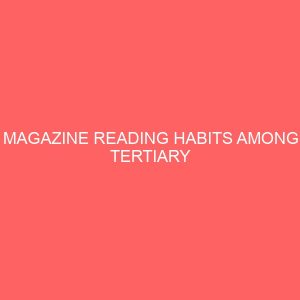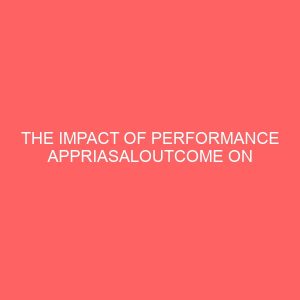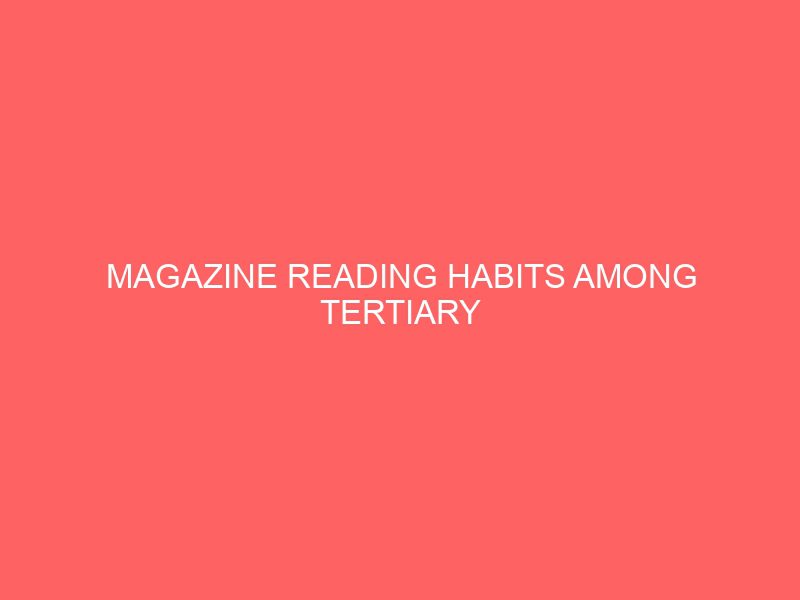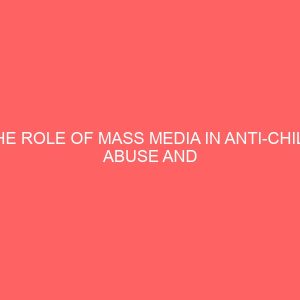MAGAZINE READING HABITS AMONG TERTIARY INSTITUTION STUDENTS. A CASE STUDY OF FEDERAL POLYTECHNIC, OKO.
DATA PRESENTATION AND ANALYSIS
In this chapter, the researcher analyses the data collected in the course of this study. She then presents the result, indicating how far the research questions confirmed or discomforted as the case may be.
In the analyzing the data , response from respondents are converted to raw scores, and then percentage of some of the data are tabulated before comments are made in respect of how they affect the research question is tested, using one or two relevant tables.
The results then presented according to how each research question is supported or redefined by the gathered data. The research question is regarded as conformed. If it is supported by the highest number of scores. And where in a list of alternate, the scores that supports the research question shows an equal score with any opposing alternative, the research question upholds so long as the score is highest among the list.
PRESENTATION OF DEMOGRAPHICAL DATA
TABLE I
THE FREQUENCY OF MAGAZINE READING HABITS OF STUDIES.
Categories Frequency of Response Percentage
By chance 35 10
Not at all 20 10
5 days a week 45 15
4 days a week 40 15
3 days a week 100 25
2 days a week 110 25
Total 350 100
From the above table, 110 respondents representing 30 percent said they read news watch magazine 2 days a week, 100 respondents representing 20 percent said they read 3 days a week, 45 representing 15 said 4 days a week, 40 representing 15 said 5 days a week, 35 representing 10 said by ÒchanceÓ and 20 of them representing 10 said Ònot at allÓ.
TABLE11
THE REASON WHY STUDENTS READ news watch MAGAZINE
S/N Categories Frequency of Response Percentage
1. To keep in touch with government activities. 120 10
2. To learn about self 20 15
3. To kill time 5 5
4. Diversion 15 25
5. To obtain 100 30
6. To be entertained 50 10
7. To cool tension 40 5
Total 350 100
It is evident from the above table that 120 respondents representing 30 percent read news watch magazine to keep in touch with government activities, 100 representing 20 percent said that they read to obtain information, 50 representing 18 said that they read to be entertained, 40 said to cool tension,20 said to learn about self, 15 said for diversion while 5 representing 2 percent said they read to kill time.
TABLE III
THE SOURCE FROM WHERE STUDENTS GET MAGAZINE
Categories Frequency of response Percentage
From serial 200 60
Borrowing from friends 100 30
No where 50 10
Total 350 100
From the table, 200 respondents representing 60 percent said they get from serial section, 100 respondents representing 30 percent said they Borrow from friends while 50 respondents representing 10 percent said ÒNo whereÓ.
TABLE IV
THE AREA OF INTEREST OF RESPONDENTS
Categories Frequency of response Percentage
News 200 42
Editorial 120 18
DonÕt know 30 25
undecided 20 15
Total 350 100
From the above,200 respondents representing 42 percent said that their interest is in News, 120 respondents representing 25 percent said in Editorial, 30 DonÕt have any interest while 20 respondents representing 15 percent were undecided.
TABLE IV
THE PERIOD STUDENTS READ MAGAZINE
Period Frequency of Response Percentage
Morning 100 10
undecided 50 30
After lectures 200 60
Total 350 100
From the above 200 respondents representing 60 percent said after lectures, while 100 said in the morning, 50 respondents were undecided representing 10.
Discussions and findings
Table 1
From table 1, it shows that 110 respondents representing 30 percent read news watch magazine 2 days a week, 100 respondents representing 20 percent said the 3 days a week, 15 said 5 days, while 35 representing 10 said by chance and 20 of them representing 10 said Ònot at allÓ.
Table II equally supported this question, it shows that 120 respondents representing 30 percent read news watch magazine to keep in touch with the government activities, 100 representing 20 percent said that they read to obtain information, 50 representing 18 said that they read to be entertained, while 40 said to cool tension, 20 said to learn about self, 15 said for diversion, 5 representing 2 said that they read to kill time.
With the above, the researcher can conveniently say that the respondents answered positively.
Table III
A quick look at table iii shows that 200 respondents representing 60 percent said they get magazine from serial section, 100 respondents representing 30 percent said they Borrow from friends while 50 respondents representing 10 percent said NO WHERE from this it proves that the research question from the respondents view is positive, negative
Table Iv gives a helping hand to this question it shows the area of interest of respondents is very positive. Because 200 respondents representing 42 percent said that, their interest is in news. 120, respondents representing 25 percent said in Editorial, while 30 donÕt have any interest, 20 respondents representing 15 percent is undecided.
TABLE V
A look at table v shows that 200 respondents representing 60 percent said they read magazine after lecture, while 100 representing 30 percent said they read in the morning, 50 respondents representing 10 percent where ÒundecidedÓ.
₦3,000.00







